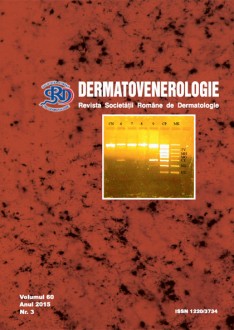Lichen planus is an inflammatory condition, with a chronic, self-limited progress, affecting the skin, the mucosas and the fanners.
Chronic kidney disease is a complex, physiological syndrome, with a multiple etiology, characterized by the kidney failure of carrying out its physiological functions, due to the progressive and irreversible destruction of nephrons, having a progressive evolution towards a terminal stage that imposes the initiation of a substitution method for the renal functions.
Clinical Case. We present the case of a 40-year old patient, from the urban area, known with stage 2 chronic kidney disease, who was admitted to the Clinic of Dermatology of Craiova for multiple erythematous papulonodular lesions, sized between 0.5 and 2 cm, with surface excoriations and scalls, in addition to intense pruritic post-lesional pigmentations and scars. We practised the biopsy of one lesion, and the HP examination showed the diagnosis of hypertrophic lichen. During hospitalization, he followed a general treatment with Ketotifen (2 cp/day), and locally there were applied oinments with salicylic acid and urea in topical corticosteroid, with a slightly favourable progress.
Conclusions. The lichen may take a hypertrophic aspect in the patients with chronic kidney disease, due to metabolic disturbances, xerodermitis and itching.
Hypertrophic lichen has a risk for malignity, which involves the periodical examination of the lesions, together with a rigurous monitorization of chronic kidney disease.


